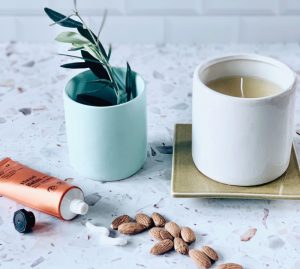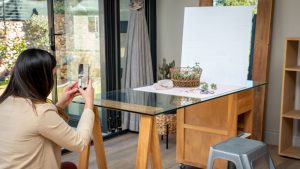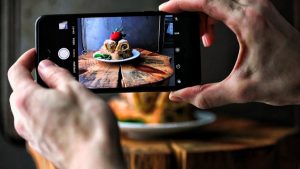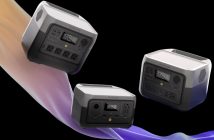Food photography is big right now, the hashtag ‘foodie’ is always trending across multiple social media platforms, with everyone wanting to share a snap of their Insta-worthy meal. For restaurant and food business owners, advertising your dishes, cakes and ready-made meals online is a great way to expand your reach and ultimately bring in money. But while it may taste delicious, food has a tendency to look colourless and unappetising in photos, unless you employ some of the top tricks food stylists and photographers use.
While not everyone has the resources to replicate big-budget commercial food ads, making a few simple changes to the way you photograph food can dramatically improve your food photos. Something as simple as using photography styling boards as backgrounds for your food photos can be a game-changer.

It’s not always necessary to stick to the same ‘look and feel’ to build your brand across all your social media food photos: in fact, changing the angles, lighting and colours of your styling boards can add a lot of variety and interest to your blog or social feed. Your aesthetic should change with the season, or according to the visual story you want to convey. For example, if you’re shooting a summer cocktail, you need to add brighter more cheerful colours that draw the viewer in, to make them feel like they are poolside on vacation.
Want to know more? Check out these easy tips for improving your food photography
Quick styling improvements
A few easy changes can dramatically improve the impact of your food photos.
Less can be more in food photos – put less food than you normally would on a simple plate, don’t zoom in too close on the food, and let the empty space (the background) draw the viewer’s eye to the main feature – the food.
Watch those reflections. Highly reflective surfaces like glassware, tiles and cutlery can ruin the effect you’re going for – revealing you and your background and distracting viewers from the food.
Find the best prices on home photo studio items online with PriceCheck now:

Lighting
Lighting is one of the most important factors in successful photos. Photograph the food in natural light wherever possible. But don’t set food out in direct sunlight if you’re a beginner – an ideal spot would be near a south-facing window or on a shaded patio, where diffused light highlights the food and casts slight shadows to emphasize its texture.
Boards and banners
Kitchens are not always the ideal locations for taking great food photos: they are often badly lit, have a lot of reflective surfaces (making taking photos or video difficult) and they may not support the look you want to create for your food story.
Matte, non-reflective and spill-proof photography styling boards make it quick and easy to set the scene, and because they are portable, you can move them to a natural light source – the best lighting for food (and just about anything else).
Prop two boards together to create a mini studio, or create an infinity curve with a photography styling banner, so you can add interest to your blog or feed by alternating between eye-level and overhead flat lay shots of your dishes.

To make food colours really pop, use a pale neutral background, such as shabby chic white wood, subtle cement, simple plaster wall finish, or glossy white. To highlight the cosiness of comfort food, use darker-toned backgrounds of warm brown wood, farmhouse grain wood or moody rust. And to emphasize the luxe factor of special dishes, desserts and pastries, go for timeless marble.
Size matters when choosing a background – because video is increasingly popular for food blogs and posts, consider getting the largest size available, so it can double as a background for both photos and demo videos.
Find the best prices on flatlay photography boards online with PriceCheck now:
Props
Details make all the difference with food photography. Raw ingredients near the finished dish tell you a little about what’s in it and are the cheapest and easiest props to include in your food photo. But the cookware and tableware you include tell part of the story too. Convey the rustic, cosy or luxe feel with a carefully chosen pot, goblet, knife or serving spoon, and use a neutral, lightweight styling cloth to add subtle texture and interest to the shot.
Plan your aesthetic in advance, and use cookware, tableware, props that emphasise the visual story you wish to convey. For a winter stew, for example, you could use a dark cement/rusted look background, a deep red bowl, a neutral beige or brown styling cloth, and a beautiful dishcloth and some of the raw ingredients as props.
For a country-style apple pie, you could use a white wood or dark wooden styling board for a rustic feel, sprinkle some flour on the board and arrange Granny Smith apples, a gingham cloth and an antique cake-lifter as props. Exquisite patisserie can be showcased with a gold-flecked marble styling board, with gold cutlery as a prop.”
Edit
While you’ll be aiming to achieve the best possible photo on your first try, you will have more success if you take masses of photos from all angles, and then edit the best ones to enhance them. Subtly edit the brightness, contrast, hue, saturation and sharpness, and possibly even add a vignette to really make the dish pop.
Find the best prices on cameras and photography equipment online with PriceCheck now:





